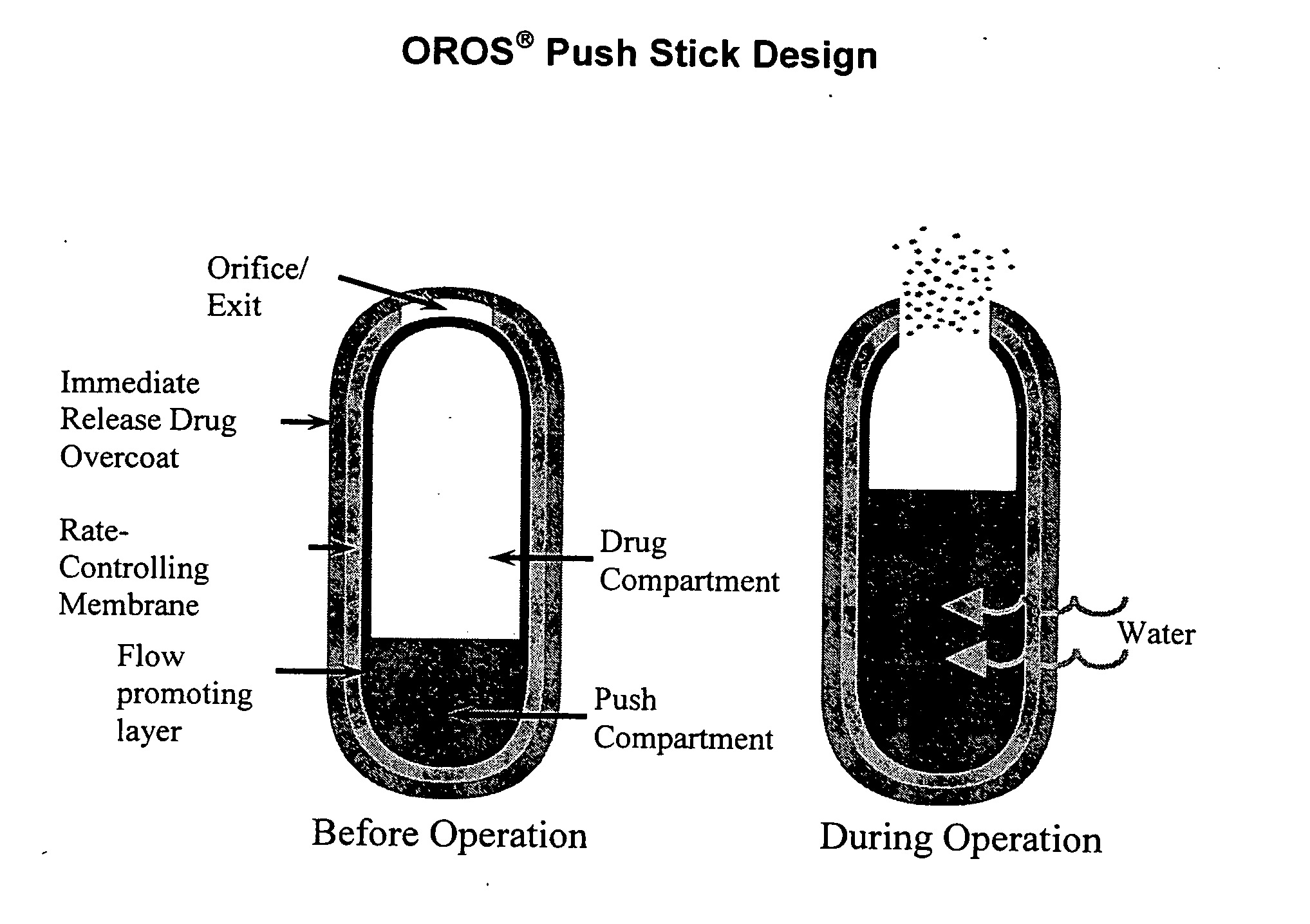Controlled release formulations exhibiting an ascending rate of release
- Summary
- Abstract
- Description
- Claims
- Application Information
AI Technical Summary
Benefits of technology
Problems solved by technology
Method used
Image
Examples
example 1
[0205] A dosage form containing 500 mg acetaminophen and 15 mg hydrocodone was prepared using procedures as follows:
Preparation of the Drug Layer Granulation
[0206] A twenty five kilogram lot of the drug layer was granulated using the medium fluid bed granulator (mFBG). A 5% manufacturing excess of hydrocodone bitartrate (HBH) was added to maintain target drug amounts in the compressed cores as established during the experimental scale up work. The binder solution was prepared by dissolving the povidone in purified water making a 7.5 wt % solution.
[0207] The specified amounts of APAP, polyethylene oxide 200 K (polyox N-80), croscarmellose sodium (Ac-di-sol), and poloxamer 188 were charged into the FBG bowl. The bed was fluidized and the binder solution was sprayed immediate thereafter. After 1000 g of the binder solution had been metered into the bowl, the granulation process was stopped the preweighed HBH was then charged into the bowl by placing it in a hole in the granulation ...
example 2
[0234] The release rate of drug from the dosage forms described above was determined in the following standardized assay. The method involves releasing systems into 900 ml acidified water (pH 3). Aliquots of sample release rate solutions were injected onto a chromatographic system to quantify the amount of drug released during specified test intervals. Drugs were resolved on a C18 column and detected by UV absorption (254 nm for acetaminophen). Quantitation was performed by linear regression analysis of peak areas from a standard curve containing at least five standard points.
[0235] Samples were prepared with the use of a USP Type 7 Interval Release Apparatus. Each dosage form to be tested was weighed, then glued to a plastic rod having a sharpened end, and each rod was attached to a release rate dipper arm. Each release rate dipper arm was affixed to an up / down reciprocating shaker (USP Type 7 Interval Release Apparatus), operating at an amplitude of about 3 cm and 2 to 4 seconds ...
example 3
[0242] The in vivo efficacy and safety of the dosage forms prepared in Example 1 were tested as follows:
[0243] Twenty-four healthy volunteers, twelve male and twelve female, were enrolled in a Phase I clinical trial of open label randomized four period crossover study design. An equal number of male subjects and female subjects were paired together in one of four groups. Subjects within each gender category were randomly assigned to the four sequences of regimens described below to avoid sequence bias and confounding of sequence and gender.
[0244] Four treatment options were tested in sequence, with a single treatment regimen administered on Study Day 1. A wash out period of at least 6 days was included to separate the dosing days. Each treatment group received each of the four treatments during the course of the study, as shown in Table 5 below with one exception. That exception was not included in the analysis of pharmacokinetic parameters. For the each of the four periods, subje...
PUM
| Property | Measurement | Unit |
|---|---|---|
| Temperature | aaaaa | aaaaa |
| Fraction | aaaaa | aaaaa |
| Fraction | aaaaa | aaaaa |
Abstract
Description
Claims
Application Information
 Login to View More
Login to View More - R&D
- Intellectual Property
- Life Sciences
- Materials
- Tech Scout
- Unparalleled Data Quality
- Higher Quality Content
- 60% Fewer Hallucinations
Browse by: Latest US Patents, China's latest patents, Technical Efficacy Thesaurus, Application Domain, Technology Topic, Popular Technical Reports.
© 2025 PatSnap. All rights reserved.Legal|Privacy policy|Modern Slavery Act Transparency Statement|Sitemap|About US| Contact US: help@patsnap.com



